#its archaeology and art
Text
Pinterest just took down my pin of the Venus of Willendorf / Nude Perspective of the Self post for being "adult content". It was a neolithic statue. And a grainy photograph that allegedly contains a female presenting nipple, but like, for scientific purposes. You've all seen it.
The appeal link was broken too
19 notes
·
View notes
Text

A Snake Sculpture (6th-11th Century AD), from U Thong District in Thailand.
📸 Bangkok National Museum.
#snake#serpent#snake 🐍#serpent 🐍#snakes#serpents#sculpture#ancient art#archaeology#thailand#bangkok national museum#its little face though
537 notes
·
View notes
Text

The Celtic goddess Sequana in her duck-boat.
Bronze, Gallo-Roman era, Archaeological Museum of Dijon
#cultus deorum#celtic#celtpol#gaulpol#gallo-roman#archaeology#roman archaeology#celtic art#sequana#polytheism#gaulish polytheism#gaul#oh she comin#the duck is holding a ball in its mouth#also the boat is LITERALLY a duck#it doesnt get better than this my friends
177 notes
·
View notes
Text


i had my first drawing lessons in the polish academy of sciences >_<

this potsherd was very pleasant to draw
I hate doing new things so much lol

this one ^^^^ was however very unpleasant -_- i hate how it looks but i will keep drawing it again and again until it starts to look decent :)

I have to draw them again... this time avoiding mistakes i did earlier
Its been quite a long time since I stopped drawing for myself, drawing or painting or at least doodling. i've been kind of trying to get back into it but without success so far. i just lack motivation. ofc drawing documentation is totally different than drawing art, but i had a lot of fun with it, it was pleasant and genuinely reminded me of how pleasant creating is.
#i still create art but its mostly pottery#which is different from painting and drawing#moje#archaeology#thesis
11 notes
·
View notes
Text


Self-indulgent modern-fantasy archaeology au
Lamb and a team (including Goat, Yellow Cat, and a few ocs) are excavating an ancient ruin. Lamb ends up underground somehow, in a cavernous chamber, and discovers an ancient temple with five doors.
Well... less a temple and more of a.... tomb.
#justa arts#cult of the lamb#cotl au#sketch#archaeologist au#why is this self indulgent? bc im in anthropology school with intent to pursue archaeology lol#anyway i sketched these while watching a video for bio anthropology and my roommate is napping#so its dark sorry o7#you find a hella ancient tomb and five ancient crowns and#oops the coffins are opening and youve just released 5 powerful gods into a world gods are no longer needed#why did the bishops seal themselves away? idk probably to seal Narinder away
3 notes
·
View notes
Text

literally everyone in the comments saying this is bait 😭😭😭 i was going to say this genuinely rules
#june speaks#other than the fact its ‘‘archaeology’’ then dinosaurs#not literally everyone the rest are saying polyamorous people are disgusting and should die but thats why i Only go on twitter for the art
3 notes
·
View notes
Text
also explaining what youre doodling to coworkers without sounding too cringe his hard ... even for a job where nearly everyone is a dork nerd and cringe is fake and whatever im still like , oh cringe
#like it doesnt matter lol its VERY rare to coke across a quote Normal unquote person in archaeology especially fieldwork#and cringe for liking shit is dumb and fake and i enjoy being cringe actually#until i have to explain to people more of the inner workings of my brain#its one thing to say 'oh i used go be a comic con vendor' annnd another to say#'oh year im eyeballs deep in a 5 page concept speculation into the world of this game because im bored of the mini comic im doing'#gnslfhdk like it doesnt matter and they like the art but fkdjfjd ye#rory's ramblings
6 notes
·
View notes
Text
Though the issue with now not being a 'fandom' blog, like my blog used to be fully tes themed and such And now it's just. Me and art and nonmedia things I'm into like archaeology
It's made me very reluctant and almost guilty to post media stuff I like more than sparingly and I have no idea why it's such an issue for me
#like. i tag things accordingly you can just blacklist#and i know its My Blog and its not an issue but i still feel Cringe#maybe i should make a sideblog thats not geared towards any one thing but just for the stuff i feel weird abt posting on here#which shouldnt MATTER this blog isnt themed its just my blog but it feels rude to let people come here expecting art and archaeology#and tasteful stuff and then flood their dashes with st*r w*rs memes
10 notes
·
View notes
Text
Sites preserved as if in amber, an archaeologist's dream.
If only they, too, hadn't been lost to history.
#ki'deshi#was thinking about this in class yesterday#congrats! you finally have sites and artifacts and ecofacts that will never rot and decay and will stay preserved thousands of years#into the future#its a damn shame the art of archaeology was lost along with the rest of modern day society#probably still explorers and people who take notes but all the standardization is gone#it speaks
3 notes
·
View notes
Text
Found a 12 hour video on quantum mechanics that has ensnared me, but also later today I've been invited to an archaeological conference and I can't decide whether or not I wanna stay home with the full quantum mechanics curriculum, or go out and chat with archaeologists abt their finds today 😭😭😭
#truly rude that I enjoy both stem and arts/humanities#i love science and math but my major is art history and rn im taking archaeology courses#so im indecisive on what i wanna do#the conference requires going out and socializing which i don't mind but also its a 40 min drive#but the topics will be interesting
1 note
·
View note
Text

Je m'ennuyais dans mes lessons de français alors j'ai dessiné un squelette avec des bijoux.
#art#a simple little drawing#its a skeleton#because i study archaeology#and in french because i learn it at the moment
0 notes
Text
the more i think about it, the more i think that going to art school is a cop-out. like i'm just considering it bc getting my master's in archaeology was too hard.
i wish to be ground into a fine wasabi paste
#personal#its incredibly frustrating bc i want to talk it over with people#but i legitimately only have my dad & my therapist to talk to about it#my dad doesn't really seem to care either way & doesn't help me figure shit out either way#& my therapist DOES help me try to figure shit out but never in any solid direction#like he'll feed me the bullshit of 'it'll all work out you can do this you've done it before i have faith in you'#but not about like...the merits of either option????#& i know he's not versed in either art or archaeology#but like..............i just......want to talk.........to someone about this shit................#SIGH
1 note
·
View note
Text

fragment: asteroid pyramid
#art#my art#sketchbook#doodle#bootwither.art#drawing#pen drawing#been digging out scraps from old sketchbooks#its like archaeology but for artists
0 notes
Note
https://nypost.com/2024/08/28/world-news/boy-4-accidentally-smashes-bronze-age-jar-that-was-at-least-3500-years-old/
Your thoughts?
Personally, I'm kinda sick of museums being required to cater to kids so much. If you're going to do this open air exhibit, kids who don't know how to keep their hands to themselves just shouldn't be allowed in. The glass is there for this very reason.
Actually, I'm with the museum on this one. Is it unfortunate that the vase was broken? Yes. Was the vase a valuable piece of the past? Also yes. But I think the museum did something very cool by not having the artifacts behind glass and are handling this with good grace and the sense to make this a learning opportunity.
Sometimes we overlook the fact that museums often attempt to arrest or freeze artifacts in time. They are kept in controlled conditions to prevent them from deteriorating and even treated to reverse damage. Many things on display on museums are elevated beyond their original value, alienated from their original purpose, and closed off from interaction.
It's incredible that this jar survived as long as it did—and its age is what makes it special—but at the end of the day, it is still a jar. It has now experienced the thing that happens to pretty much every jar that has been or will be. After all, decay is an extant form of life. (If you want to read a very well written and interesting take on decay and archaeology, check out this article by Caitlin DeSilvey.)
The article I linked above provides some important context and the update that the museum is planning on using this as an opportunity to teach about the conservation process. The jar's story is not over; it is being pieced back together and in this next chapter in its life it will be able to tell two stories: one of its life and the other of its rebirth. The museum's approach embraces that, exactly like the Japanese art of Kintsugi.
I also agree with the museum's decision not to punish the child or his family. Things go wrong in museums all the time despite their highly controlled environments, and this is why they have artifacts insured. Sometimes the thing that happens is a child, and by and large museums do not seek damages.
I would encourage you to rethink your stance on museums and children. Museums are for everyone. Children have a right to experience museums and what they have to offer just like anyone else. There are also many studies that discuss how going to museums benefits children.
In this case, perhaps the exhibit design was slightly flawed, but the four year old boy accidentally knocked the jar over because he was curious about what was inside and wanted to investigate. Curiosity is exactly what museums should be encouraging. In an ideal world that curiosity would have been channeled into some other kind of engagement, but the folks who work in museums have a lot on their plates and cannot plan everything perfectly all the time. Even if they could, they often do not have the resources to do so.
Finally, the AP article mentions that the boy and his family were visiting the museum to get away from Hezbollah rocket fire. Regardless of your opinions on the current conflict, everyone deserves to have a safe place to exist. That museums can serve as those spaces is an honor.
I commend the Hecht Museum and the people working there. They 1) successfully provided a place of learning and refuge, 2) opted not for a punitive approach—which is often the default Western model for justice—but a compassionate one, and 3) are using this twist of fate to create programming that will further engage the public.
@museeeuuuum and @museum-spaces would you care to comment?
-Reid
296 notes
·
View notes
Note
Hello! I've just found your podcast and listened into some older episodes. They helped me on my journey of understanding my sexuality, and formulate why some stories appear more sincere than others. Thank you two!
In one episode that Aboriginal people are "like black people in Australia" (I hope I quote this correctly). If It's no hassle, I would be curious in understanding the social circumstnaces you are descrbing. Happily waiting for a new episode, and thank you very much for the fun and informative work!
hello there, thank you so much for listening to gayv club! I'm chuffed that you love the podcast (psst follow @gayvclubpodcast) 🥰
So, to answer your question, Aboriginal and Torres Strait Islander peoples are the Indigenous people to what the world calls "Australia". And we are Black people. We are Black people and were racialised as Black Indigenous people when British and European people colonised the land over 200 years ago. Aboriginal people were called Black throughout Australias white colonial history and so we also call ourselves Black.
Aboriginal and Torres Strait Islander peoples in this country have been subjected to anti-Black violence and genocidal policies that include but aren't limited to slavery, deaths in custody, segregation, and apartheid. Not to mention forced child removal and assimilation policies intended to "breed the Black out" of our culture.
But we're still here! Aboriginal and Torres Strait Islander peoples are the oldest continuously practising culture in the world. Recent archaeological discoveries show Aboriginal people were baking bread even before the ancient Egyptians and Greeks. As a community, we've had our own Black power movements, music movements, and art movements too.
I'm generalising a lot because Aboriginal and Torres Strait Islander peoples are very diverse. We've got over 400 languages and nations, each with its own cultural rules. While many of us have lost our language and culture because of colonisation, there are many who haven't and many working to restore and preserve it.
One thing I will make very clear is that all Aboriginal and Torres Strait Islander peoples refer to ourselves as Black (sometimes without the C) regardless of what we look like. There are many Aboriginal people, like myself, who are pale skinned and still call ourselves Black and are accepted as such. This is because we do NOT adhere to blood quantum that colonisers try to put on us. Our connection to Blackness is about our connection to family and community, it is not *only* about how we look.
Hope this helps you understand a bit. I for one am very proud to be Blak. I'm very proud to be Aboriginal. If you want to learn more about Aboriginal culture and history, here's some resources:
youtube
271 notes
·
View notes
Text
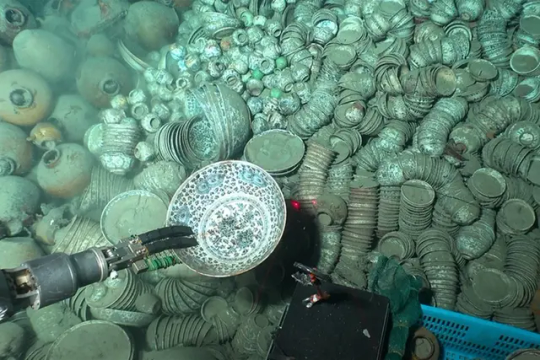
900 Artifacts From Ming Dynasty Shipwrecks Found in South China Sea
The trove of objects—including pottery, porcelain, shells and coins—was found roughly a mile below the surface.
Underwater archaeologists in China have recovered more than 900 artifacts from two merchant vessels that sank to the bottom of the South China Sea during the Ming dynasty.
The ships are located roughly a mile below the surface some 93 miles southeast of the island of Hainan, reports the South China Morning Post’s Kamun Lai. They are situated about 14 miles apart from one another.

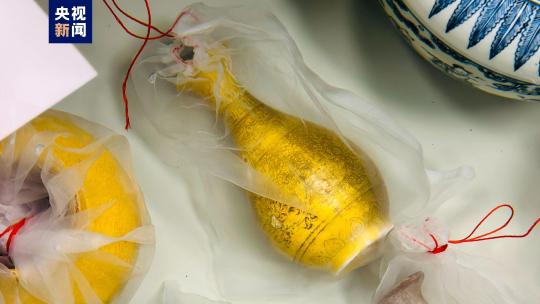
During three phases over the past year, researchers hauled up 890 objects from the first vessel, including copper coins, pottery and porcelain, according to a statement from China’s National Cultural Heritage Administration (NCHA). That’s just a small fraction of the more than 10,000 items found at the site. Archaeologists suspect the vessel was transporting porcelain from Jingdezhen, China, when it sank.
The team recovered 38 items from the second ship, including shells, deer antlers, porcelain, pottery and ebony logs that likely originated from somewhere in the Indian Ocean.
Archaeologists think the ships operated during different parts of the Ming dynasty, which lasted from 1368 to 1644.

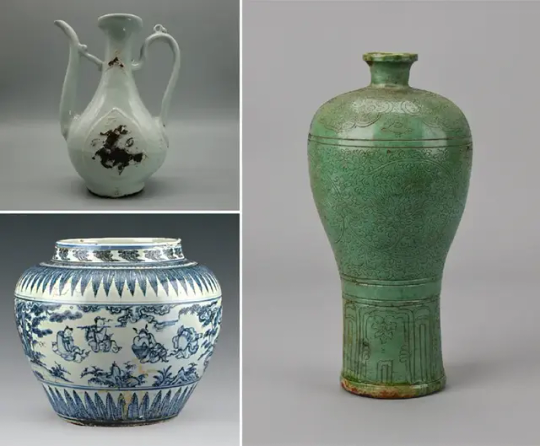
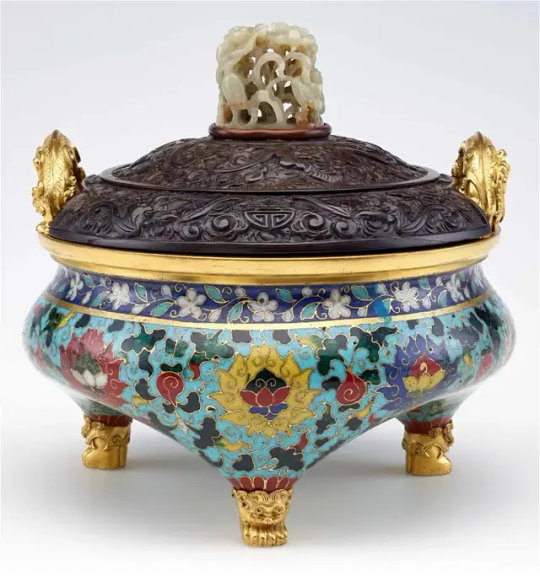
Many of the artifacts came from the Zhengde period of the Ming dynasty, which spanned 1505 to 1521. But others may be older, dating back to the time of Emperor Hongzhi, who reigned from 1487 to 1505, as Chris Oberholtz reported last year.
Archaeologists used manned and unmanned submersibles to collect the artifacts and gather sediment samples from the sea floor. They also documented the wreck sites with high-definition underwater cameras and a 3D laser scanner.
The project was a collaboration between the National Center for Archaeology, the Chinese Academy of Science and a museum in Hainan.
“The discovery provides evidence that Chinese ancestors developed, utilized and traveled to and from the South China Sea, with the two shipwrecks serving as important witnesses to trade and cultural exchanges along the ancient Maritime Silk Road,” says Guan Qiang, deputy head of the NCHA, in the agency’s statement.
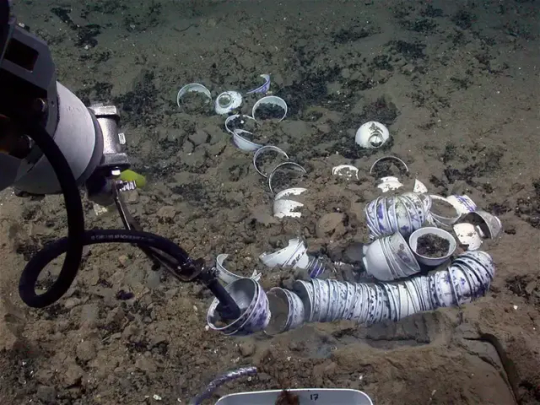


During the Ming dynasty, China’s population doubled, and the country formed vital cultural ties with the West. Ming porcelain, with its classic blue and white color scheme, became an especially popular export. China also exported silk and imported new foods, including peanuts and sweet potatoes.
The period had its own distinctive artistic aesthetic. As the Smithsonian’s National Museum of Asian Art writes, “Palace painters excelled in religious themes, moralizing narrative subjects, auspicious bird-and-flower motifs and large-scale landscape compositions.”
The shipwreck treasures aren’t the only recent discoveries in the South China Sea, according to CBS News’ Stephen Smith. Just last month, officials announced the discovery of a World War II-era American Navy submarine off the Philippine island of Luzon.
By Sarah Kuta.

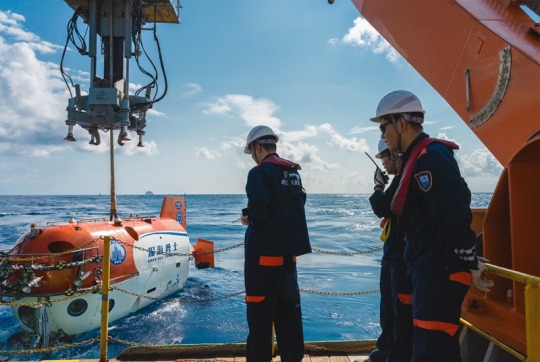
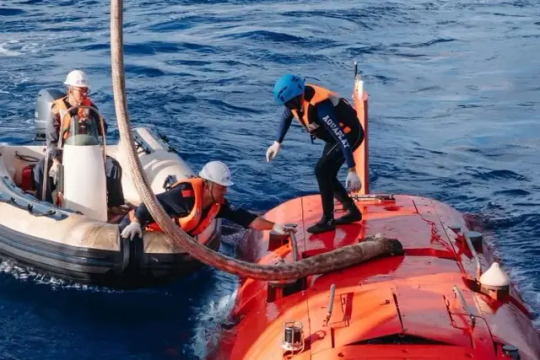
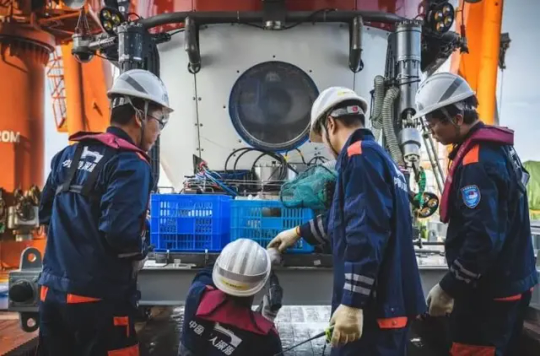
#900 Artifacts From Ming Dynasty Shipwrecks Found in South China Sea#island of Hainan#Ming dynasty#shipwreck#ancient artifacts#archeology#archeolgst#history#history news#ancient history#ancient culture#ancient civilizations#ancient china#chinese history#chinese art#ancient art
225 notes
·
View notes